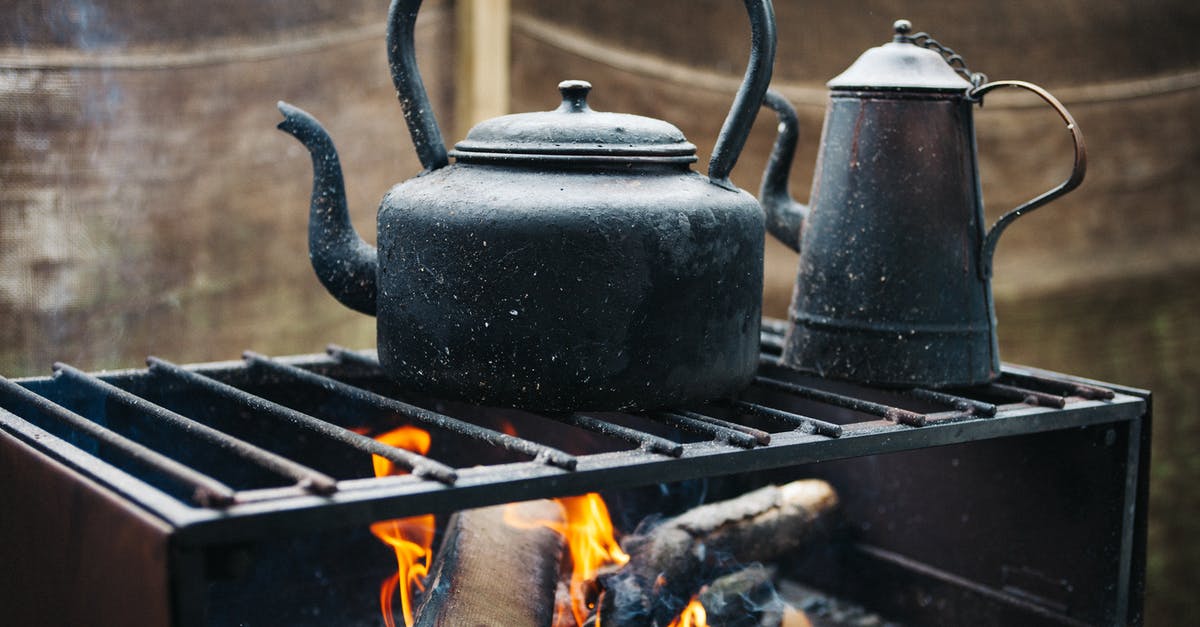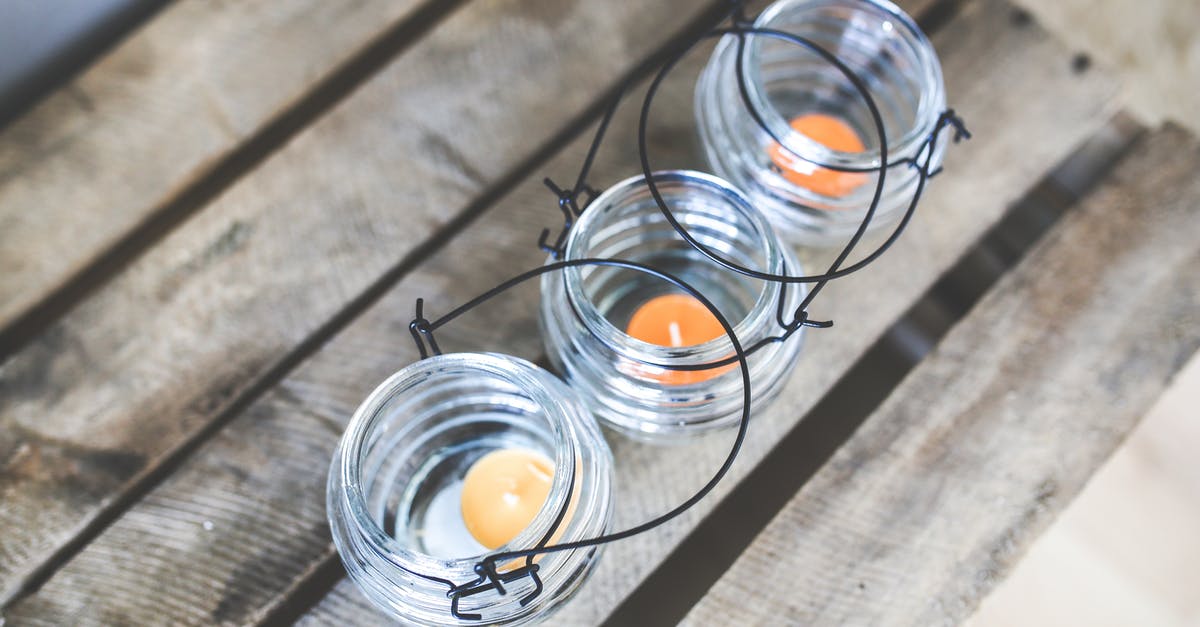hardened residue after high heat cooking (carbon steel and cast iron)

Here is my one month old De Buyer pan:

I've seasoned it off and on in the last month at least 10 times, using thin layers of oil and on the stove top. It's very dark brown to black over the entire cooking surface. This is my first pan that requires seasoning (carbon steel or cast iron) so I'm just feeling my way in the dark here.
I had some initial traumatic experiences with bacon. The "internets" claim that bacon is fatty and great to break-in a newly seasoned pan. Lies. Lies. The sugar in bacon burnt into the pan and I had to boil water to remove the stains, which took some seasoning away. Since then I've cooked eggs, pancakes, Kartoffelpuffer, char kway teow, and caramelized steak with great success. I'm finally starting to feel this pan is living up to the hype.
After charring some sous vide steaks over high heat this morning, I noticed black splotches on the pan:

I've cleaned the pan (water, brush, plastic scrubby) probably more than I should already, so this is not something that can be cleaned off. That makes sense as the high heat used to char the steaks is very similar to a seasoning session. It's just uneven.
Is this (making the pan bottom slightly uneven) a problem? Is this to be expected? Is this the type of thing repeated ad infinitum that makes heirloom cast iron so valuable?
Best Answer
Your residue looks like burnt on carbohydrates to me. It can happen with both sugar and bread, but bread gives it a different shape, it chars in a crumb-like texture. Yours seems like viscous caramel flowed until it burnt on.
The seasoning of a young pan is indeed quite sensitive. Don't make sticky stuff in it.
What I have found to work well in new pans is meat with sufficient amount of fat, such as marbled chops or steaks. You also need to do some decent deglazing after that, to remove the stuck-on meat.
If you get protein residue, make something with wet eggs to clean it. Crepes work great for leaving you with mirrorlike pan seasoning. Use a little bit of oil between every 2-3 crepes. If you can do good scrambled eggs or an omelette, this is also a good pan "cleaner", and the residue taste fits better. But if you are likely to dry out the eggs, it can happen that they take off the not-yet-settled seasoning with them.
Wet carbohydrates (such as the flour in crepe batter) are no problem, but once dry carbohydrates burn on, I don't know of any method to remove them without damaging the seasoning (and sugar syrup counts as a dry carbohydrate if it stays for long enough to caramelize). Just don't use them on new pans. Once your pan is seasoned well with use, you can start using them, but always combine them with sufficient fat - you should be shallow frying the items which have them, not grilling.
The oil which you used for seasoning also matters. I've seen lots of sources to recommend flax and other unsaturated oils, because they polymerise easier. The problem is that they are also stickier after polymerisation, especially if the polymerisation wasn't complete. Try seasoning with something which has a larger percentage of saturated fat (lard, coconut oil) and cooking with it the first few times. If you are doing a multi-layer seasoning, you can start the first one or two layers with flax, for a better grip between polymer and metal, but seal it with a saturated oil.
If you cannot physically remove the caramel residue but want to strip the seasoning and start anew, remove it chemically. Use a strong base, I prefer a lye soak. Don't use acid, it will rust the pan in seconds. You can also leave it there, but it will reduce the evenness of heat transfer and increase the chance that the new seasoning flakes off.
Pictures about "hardened residue after high heat cooking (carbon steel and cast iron)"



What is the black stuff that comes off my cast iron skillet?
They are most likely carbon deposits. This happens due to overheating of fats and oils. Using an oil with a low smoke point will carbonize at high temperatures and cause residue from the pores of your pan to rub off onto your food. While unappealing, they won't hurt you in such a small amount.How do you get sticky residue off a carbon steel pan?
Sticky ResidueHeat the pan until a drop of water evaporates the moment it hits the interior surface. Remove from heat. Add a mixture of two parts salt to one part oil (2 tablespoons salt and 1 tablespoon oil, for instance) and, using a paper towel, rub this mixture all over the interior of the pan.Should cast iron have black residue?
The black residue on a cast iron skillet isn't harmful; it's just a part of cooking with a cast iron pan. A black seasoned coating shouldn't rub off easily or affect the food, as it should form a useful non-stick surface for cooking. If residue starts to build up, however, this can affect your cooking.How do you clean carbon steel after cooking?
Wash your seasoned carbon steel cookware by hand with warm water. You can use a small amount of soap. If needed, use a pan scraper, scrub brush, or nonscratch pad. For stuck-on food, simmer a little water for 3-5 minutes, then use the scraper after the pan has cooled.How to season and care for Carbon Steel and Cast Iron Cookware
More answers regarding hardened residue after high heat cooking (carbon steel and cast iron)
Answer 2
In the restaurant, we just poured some coarse salt into the pan and put it on high heat (gas range). Then tossed the salt around and poured out the results.
At home, with the electric range top, I put my carbon steel wok on a burner on high (it's scary, but it works) and watch as everything burns off and the carbon steel "steel" look returns.
The brilliance doesn't last but the surface does. I use a cotton rag that is very lightly dabbed in peanut oil to brush the surface while it's hot.
And then it darkens when it's cooling/cooled.
Don't hesitate to go hot, really hot. Just be safe at the same time.
Sources: Stack Exchange - This article follows the attribution requirements of Stack Exchange and is licensed under CC BY-SA 3.0.
Images: Clem Onojeghuo, Clam Lo, Kaboompics .com, Prince Photos
